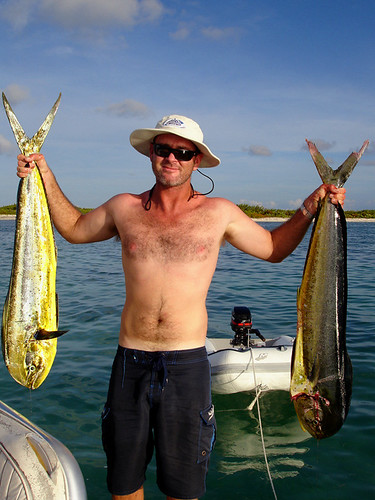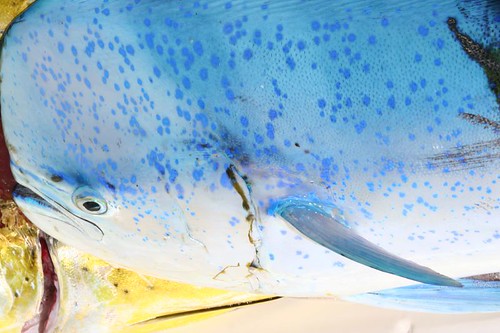Delicious Dolphin? Yes indeed! The Dolphin fish is one of the most delicious of the tropical fish species, so be sure to try some while you’re here in Antigua. First of all, I should tell you that the dolphin FISH is very different from the dolphin mammal (flipper) so don't be alarmed to find it on local menus. To avoid that confusion many restaurants actually adopt the Hawaiian name for the fish: Mahi Mahi.
Other than being delicious, dolphin fish are also absolutely stunning to observe in the wild. The adults average about 4 feet in length and glisten in flashes of turquoise, green and yellow. Although the dazzling colours fade once they are caught, dolphin caught by rod and reel is one of the world’s most sustainable fisheries, which means that it’s one of the most “eco friendly” choices of fish that you’ll find on the menu. While most types of seafood are facing great threat from overfishing, dolphin populations are relatively healthy. The main reason for this is that the dolphin’s reproduction and life cycle is so incredibly fast. A female dolphin just one year old can spawn up to 240 thousand eggs during her season, which lasts several months a year. Within one year of hatching, a "baby" dolphin could be three feet long, and by the time the largest adult dies of old age they will only be about four years old. At that stage a female may weigh up to 35 lbs and a male could be as much as 90 lbs. My dad has the tournament record here in Antigua with a fish he caught two years ago that weighed in at 63 lbs.
Dolphin fish are pelagic which means they live out in the open ocean, and their favorite place to search for food is around Sargasso weeds, flotsam or jetsam. In fact, anything floating in the Atlantic may have tiny shrimp, crabs, squid, baby turtles, and fish living around it, and it is here that the dolphin will catch most of its prey. They also go after fast moving flying fish and small mackerel, swimming up to 40 mph into the schools of prey! Speaking of prey, if you are lucky enough to be feeding on dolphin fish you should make sure that it’s not overcooked. Like most pelagic fish, dolphin meat gets quite dry when cooked for too long. So enjoy your dolphin fillet – or better yet, get out on the water while you are here and catch one yourself!

